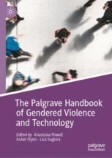Search
Search Results
-
Is Machine Learning Really Unsafe and Irresponsible in Social Sciences? Paradoxes and Reconsideration from Recidivism Prediction Tasks
The paper addresses some fundamental and hotly debated issues for high-stakes event predictions underpinning the computational approach to social...
-
Conti Inc.: understanding the internal discussions of a large ransomware-as-a-service operator with machine learning
Ransomware-as-a-service (RaaS) is increasing the scale and complexity of ransomware attacks. Understanding the internal operations behind RaaS has...

-
Fragmenting Epistemologies: Toward Philosophical Foundations for Machine Learning in Law
In an age of agnosis, law’s world-building function might appear to offer some consistency. Powered by the surreal epistemology of due process, law...
-
In Pursuit of Interpretable, Fair and Accurate Machine Learning for Criminal Recidivism Prediction
ObjectivesWe study interpretable recidivism prediction using machine learning (ML) models and analyze performance in terms of prediction ability,...

-
Partners in Criminology: Machine Learning and Network Science Reveal Missed Opportunities and Inequalities in the Study of Crime
ObjectivesResearch in criminology and criminal justice is a rapidly growing interdisciplinary, international network of intersecting research topics....

-
Measuring the Built Environment with Google Street View and Machine Learning: Consequences for Crime on Street Segments
ObjectivesDespite theoretical interest in how dimensions of the built environment can help explain the location of crime in micro − geographic units,...

-

-
A machine learning analysis of serious misconduct among Australian police
Fairness in policing, driven by the effective and transparent investigation and remediation of police misconduct, is vital to maintaining the...

-
Built environment attributes and crime: an automated machine learning approach
This paper presents the development of an automated machine learning approach to gain an understanding of the built environment and its relationship...

-
Map** the Risk Terrain for Crime Using Machine Learning
ObjectivesWe illustrate how a machine learning algorithm, Random Forests, can provide accurate long-term predictions of crime at micro places...

-
Using Machine Learning Methods to Study Technology-Facilitated Abuse: Evidence from the Analysis of UK Crimestoppers’ Text Data
Quantitative evidence on technology-facilitated abuse (“tech abuse”) in intimate partner violence (IPV) contexts is lacking globally. This...
-
Measuring Cybercrime in Calls for Police Service
Conventional police databases contain much information on cybercrime, but extracting it remains a practical challenge. This is because these...

-
Forecasting for Police Officer Safety: A Demonstration of Concept
PurposePolice officers in the USA are often put in harm’s way when responding to calls for service. This paper provides a demonstration of concept...

-
Exploring the Determinants of Crime-Terror Cooperation using Machine Learning
ObjectivesThis study seeks to further strengthen extant knowledge regarding terrorist group involvement in organized criminal activity through two...

-
Learning Lessons from Countering Terrorism: the UK Experience 2017–2020
Research QuestionWhat lessons can be learned from counter-terrorism policing in a recent 3-year time period in which the UK suffered the loss of 41...
-
Detention Decision-Making in Slovenia Using the Computerized Risk Assessment Tool Detention v1.0: Effective Use of Machine Learning Algorithms from the Perspective of the Defendant’s Procedural Rights
Judicial systems will soon no longer be able to avoid the process of modernization in the form of day-to-day use of algorithms. In the United States...
-
Analysis of the risk of theft from vehicle crime in Kyoto, Japan using environmental indicators of streetscapes
With the advent of spatial analysis, the importance of analyzing crime patterns based on location has become more apparent. Previous studies have...

-

-
Learning to rank spatio-temporal event hotspots
BackgroundCrime, traffic accidents, terrorist attacks, and other space-time random events are unevenly distributed in space and time. In the case of...

-
An Algorithmic Assessment of Parole Decisions
ObjectivesParole is an important mechanism for alleviating the extraordinary social and financial costs of mass incarceration. Yet parole boards can...

